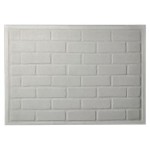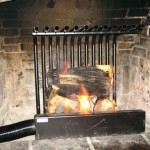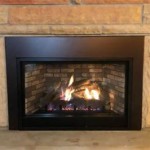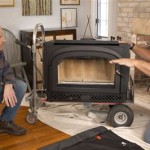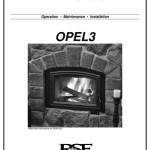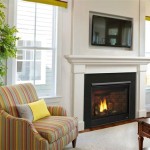Will an Electric Fireplace Save You Money?
The question of whether an electric fireplace can lead to cost savings is a common consideration for homeowners exploring alternative heating options. Understanding the factors that contribute to the overall cost of heating, the efficiency of electric fireplaces, and how they compare to other heating methods is crucial to answering this question. This article will delve into these aspects to provide a comprehensive analysis of the potential cost savings associated with using an electric fireplace.
The primary function of any heating appliance is to raise the temperature of a designated area. Traditional heating systems, such as central furnaces, operate by heating an entire home, regardless of whether all rooms are occupied. This can lead to wasted energy and increased heating bills, particularly in larger dwellings where some rooms may remain unused for extended periods. Electric fireplaces offer a different approach, providing supplemental heating that can be targeted to specific areas.
Electric fireplaces operate by converting electrical energy into heat through a heating element. The heat is then distributed into the room, typically via a fan that circulates the warm air. The efficiency of this process, the cost of electricity, and the frequency of use are all key determinants of whether an electric fireplace can contribute to cost savings.
Analyzing Energy Efficiency and Heating Capacity
Electric fireplaces are generally considered to be highly energy efficient. They convert nearly 100% of the electrical energy they consume into heat. This contrasts with traditional fireplaces that burn wood, which can lose a significant portion of their heat up the chimney. While the initial investment in an electric fireplace may be less than that of a gas or wood-burning fireplace, the operational costs need to be carefully evaluated.
The heating capacity of an electric fireplace is typically measured in British Thermal Units (BTUs). A standard electric fireplace typically produces around 5,000 BTUs, which is sufficient to heat a 400-square-foot room. This localized heating capability is a key factor in potential cost savings. Instead of heating an entire house with a central heating system, an electric fireplace can be used to heat a single room, such as a living room or bedroom, thereby reducing the strain on the main heating system.
However, it is important to understand that electric fireplaces are not designed to be a primary source of heat for an entire home in colder climates. Their purpose is to supplement the existing heating system and provide localized warmth. Overreliance on an electric fireplace as the sole heat source in a large, poorly insulated home could potentially increase energy consumption and overall heating costs.
Comparing Costs: Electricity vs. Other Fuel Sources
To determine whether an electric fireplace can save money, it is essential to compare the cost of electricity with the costs of other fuel sources, such as natural gas, propane, or heating oil. The price of electricity varies depending on location and time of year. It is critical to know the electricity rate (usually expressed in cents per kilowatt-hour, kWh) in your area to accurately estimate the operating cost of an electric fireplace.
For example, an electric fireplace that consumes 1,500 watts (1.5 kilowatts) and is used for 4 hours per day with an electricity rate of $0.15 per kWh would cost $0.90 per day to operate (1.5 kW x 4 hours x $0.15/kWh = $0.90). Over a month, this would amount to $27. The potential savings arise when this $27 is less than the amount saved by reducing the usage of the central heating system by focusing heat in one specific area, or offsetting the need to turn the heat on in the first place.
Natural gas prices also fluctuate, and the efficiency of gas furnaces can vary. While gas may be cheaper per unit of energy, the efficiency losses in a gas furnace can reduce the overall cost advantage. Furthermore, the cost of maintaining a gas furnace, including annual inspections and potential repairs, should be factored into the long-term cost analysis. Similarly, heating oil prices can be volatile and are often more expensive than natural gas or electricity. The costs associated with storing heating oil and maintaining the oil furnace should also be considered.
Wood-burning fireplaces can appear to be a cost-effective option if wood is readily available and free. However, the hidden costs associated with wood include the time and effort required to chop, stack, and season the wood. Additionally, wood-burning fireplaces are typically less efficient than electric fireplaces, losing a significant portion of heat up the chimney. Environmental concerns related to air pollution from wood smoke are also a factor.
Strategies for Maximizing Energy Savings with an Electric Fireplace
Several strategies can be implemented to maximize energy savings when using an electric fireplace. First, it is important to use the fireplace only when necessary. Strategically using the electric fireplace in rooms where occupants spend the most time can minimize the need to heat unoccupied areas of the home.
Second, consider the thermostat settings for both the electric fireplace and the central heating system. Lowering the central heating thermostat by a few degrees when using the electric fireplace can significantly reduce overall energy consumption. Some electric fireplaces have built-in thermostats that allow precise temperature control, further optimizing energy usage.
Third, ensure adequate insulation in the room where the electric fireplace is used. Proper insulation helps to retain heat and prevent drafts, reducing the amount of energy required to maintain a comfortable temperature. Sealing windows and doors can also contribute to improved insulation and reduced energy waste.
Fourth, explore electric fireplaces with energy-efficient features. Some models incorporate LED lighting, which consumes less energy than traditional incandescent bulbs. Others have timers that allow the fireplace to automatically turn off after a set period, preventing unnecessary energy consumption. Remote controls can also provide added convenience and control over energy usage.
Finally, regular maintenance is important for ensuring the efficient operation of an electric fireplace. Cleaning the heating element and fan can improve airflow and heat distribution, while inspecting the unit for any signs of wear or damage can prevent potential safety hazards and ensure optimal performance. While electric fireplaces require less maintenance than traditional fireplaces, such as chimney cleaning, proper maintenance will contribute to the longevity and efficiency of the appliance.
Beyond the direct energy costs, there are other financial considerations associated with using different types of fireplaces. Electric fireplaces typically have lower installation costs compared to gas or wood-burning fireplaces, which may require professional installation and venting systems. The absence of venting also eliminates the risk of carbon monoxide poisoning, a concern with gas fireplaces that are not properly maintained.
The aesthetic appeal of an electric fireplace can also contribute to perceived value. Many modern electric fireplaces feature realistic flame effects and can be customized to match the décor of a room. This can enhance the ambiance of a space without the mess and maintenance associated with traditional fireplaces. The versatility of electric fireplaces, with options for freestanding, wall-mounted, and built-in models, provides flexibility in design and placement.
In conclusion, the potential for an electric fireplace to save money depends on a variety of factors, including the cost of electricity, the efficiency of the unit, the size and insulation of the room being heated, and the usage patterns of the occupants. By carefully considering these factors and implementing strategies to maximize energy savings, homeowners can potentially reduce their overall heating costs and enjoy the supplemental warmth and ambiance provided by an electric fireplace.

Are Electric Fireplaces Energy Efficient We Love Fire

How Much Does It Cost To Run Electric Fireplace In 2024

Are Electric Fireplaces Energy Efficient We Love Fire

Do Fireplaces Save Money On Energy Costs

Does Using A Fireplace Save You Money On Your Utilities Barefoot Budgeting

Are Electric Fireplaces Energy Efficient We Love Fire

ᑕ❶ᑐ How Much Does It Cost To Run An Electric Fireplace

ᑕ❶ᑐ How Much Does It Cost To Run An Electric Fireplace

Are Electric Fireplaces Energy Efficient We Love Fire

10 Reasons To Buy An Electric Fireplace Twin Star Hometwin International

